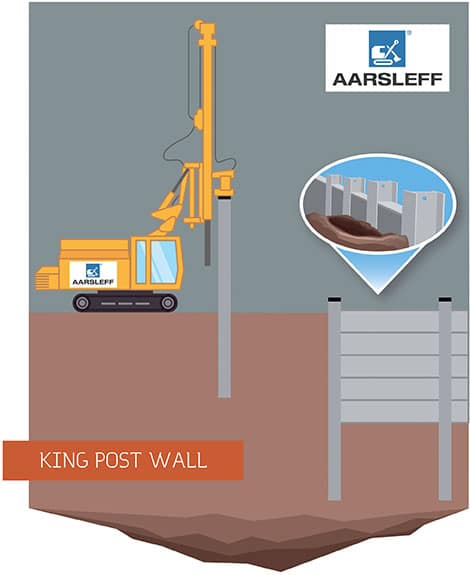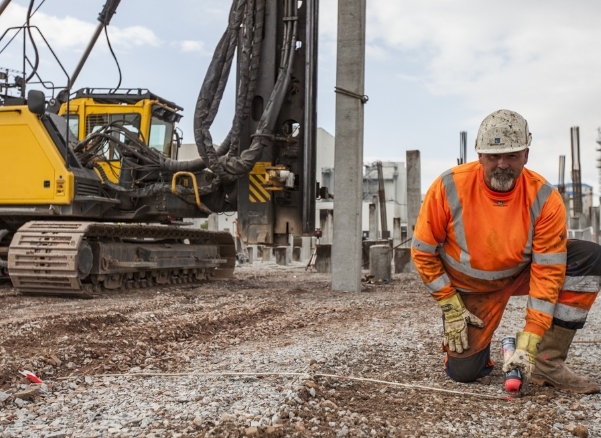What is a King Post Wall?
King Posts are isolated steel columns that are installed along the line of the proposed retaining wall typically at centres between 1 and 3m. The space between the posts is filled, over the retained height, using a variety of different solutions but most commonly a precast concrete panel.
And their design?
King Post Walls can be designed to Eurocode 7 or British standards and can be analysed in the temporary or permanent conditions. The design life of a King Post Wall is generally 50 years or more depending on the requirements.
How is a King Post Wall installed?
The method of King Post Walls involves drilling a hole with a high powered CFA, large diameter or mini piling rig and then filling it with concrete and installation an H beam. This allows concrete prestressed panels to be inserted between the webs of the H sections, which after excavation results in the finished embedded retaining wall. King Post Walls may be used for different retention applications and heights in different ground conditions, including rock.







